Can you be a Forex trader? Trading in the financial markets, especially Forex (foreign exchange), has gained immense popularity due to the allure of making profits from the comfort of your home and its flexibility.
However, before you embark on this journey, it’s crucial to ask yourself if you have what it takes to be a trader.
This article will explore the key traits, knowledge, and skills required to be a Forex trader.
What are the Basics of Trading Forex?
Trading is a financial activity where individuals buy and sell various assets to profit from price fluctuations.
While there are numerous financial markets, including stocks, commodities, and cryptocurrencies, we will primarily focus on Forex trading for this discussion.
Foreign Exchange (Forex) Trading
Forex trading, also known as currency trading, involves the exchange of one currency for another to make a profit.
The Forex market is the largest and most liquid financial market globally, with a daily trading volume exceeding $6 trillion.
It operates 24 hours a day, five days a week, making it accessible to traders worldwide.
Forex traders quote currencies in pairs, such as EUR/USD (Euro/US Dollar) or GBP/JPY (British Pound/Japanese Yen).
When you buy a currency pair, you buy one currency while simultaneously selling another.
The goal is to predict whether the price of the base currency (the first currency in the pair) will appreciate or depreciate relative to the quote currency (the second currency in the pair).
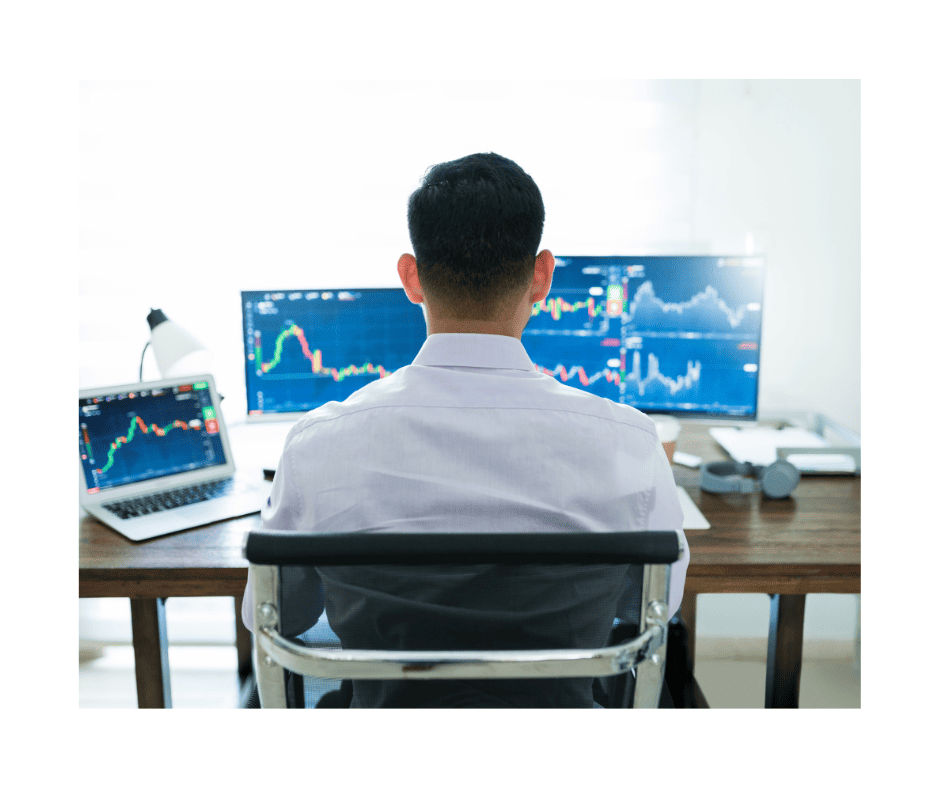
Market Participants
Several market participants engage in Forex trading, including:
- Retail Traders: These are individual traders like you and me who participate in the market through online brokers.
- Retail traders typically have smaller trading accounts compared to institutional traders.
- Institutional Traders: Large financial institutions, such as banks, hedge funds, and multinational corporations, engage in Forex trading to manage their exposure to currency risk and seek trading opportunities.
- Central Banks: Central banks play a significant role in the Forex market by implementing monetary policies and intervening in currency markets to stabilize their national currencies.
- Speculators: Speculators are traders who seek to profit from short-term price movements without a direct interest in the underlying currencies.
Trading Styles
To be a Forex trader means adopting a trading style depending on your preferences and risk tolerance. Some common trading styles include:
- Day Trading: Day traders open and close positions within the same day, aiming to profit from intraday price movements.
- Swing Trading: Swing traders hold positions for several days to weeks, capturing medium-term price swings.
- Position Trading: Position traders take a long-term approach, holding positions for weeks, months, or even years based on technical and fundamental analysis.
- Scalping: Scalpers make numerous small daily trades, aiming to profit from tiny price fluctuations.
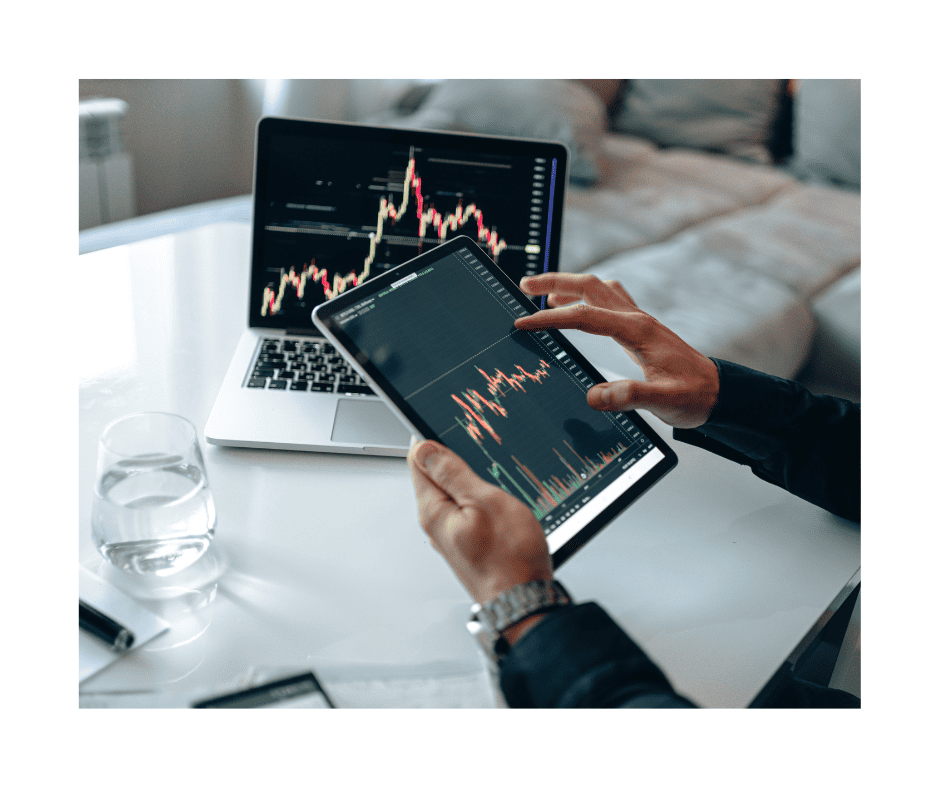
Fundamental and Technical Analysis
To make informed trading decisions, you can use two primary forms of analysis:
- Fundamental Analysis: This involves evaluating the economic, political, and social factors influencing currency prices.
- Key factors include interest rates, financial data (e.g., GDP, inflation), geopolitical events, and central bank policies.
- Technical Analysis: Technical analysis studies historical price charts and patterns to predict future price movements.
- Traders use indicators, trend lines, and chart patterns to identify entry and exit points.
Leverage
Leverage is a double-edged sword in Forex trading. It lets you control more significant positions with relatively little capital, magnifying potential profits and losses.
While leverage can amplify gains, it also increases the risk of substantial losses. Traders must use leverage cautiously and implement strict risk management strategies.
Risk Management
Effective risk management is paramount in trading. You must determine how much capital you will risk on each trade and set stop-losses to limit potential losses.
Diversifying your trading portfolio and not putting all your capital into a single trade can help mitigate risks.
Broker Selection
Choosing a reputable and regulated Forex broker is crucial for traders.
Factors to consider include spreads (the difference between the bid and ask price), commissions, available trading platforms, customer support, and the broker’s regulatory status.

What Discipline Do I Need to be a Forex Trader?
To be a Forex trader, self-discipline is often considered one of the most critical attributes. It’s the ability to control your actions, emotions, and impulses, even when facing challenging situations in the financial markets.
Self-discipline encompasses several key aspects:
- Stick to Your Trading Plan: A well-defined trading plan is the foundation of successful trading. It outlines your strategy, risk management rules, and goals.
- Self-discipline means rigorously adhering to your trading plan, regardless of external factors or emotional impulses.
- Deviating from your plan can lead to impulsive decisions and potential losses.
- Emotion Management: Trading can be an emotionally charged activity. The fear of losing money and the excitement of potential profits can lead to irrational decision-making.
- Self-discipline requires you to keep your emotions in check. When you experience a losing trade, it’s crucial not to panic or seek immediate revenge by doubling down on your next trade.
- Similarly, euphoria from a winning trade should not cloud your judgment.
- Avoiding Overtrading: Overtrading is a common pitfall for traders, especially beginners.
- It occurs when you take too many positions in a short period, often driven by impatience or the desire to recover losses quickly.
- Self-discipline involves setting clear criteria for entering and exiting trades and resisting the urge to trade excessively.
- Patience and Consistency: Trading is not a get-rich-quick scheme. It’s a long-term endeavor that requires patience and consistency.
- Successful traders understand that only some days or weeks will be profitable.
- They maintain a disciplined approach even during losses, knowing that consistently executing their trading plan will lead to overall profitability.
- Risk Management: Discipline in risk management is essential. Discipline means having predetermined stop-losses to limit potential losses on each trade and not deviating from these levels.
- It also involves determining the appropriate position size based on your risk tolerance and overall capital and not risking more than you can afford to lose on a single trade.
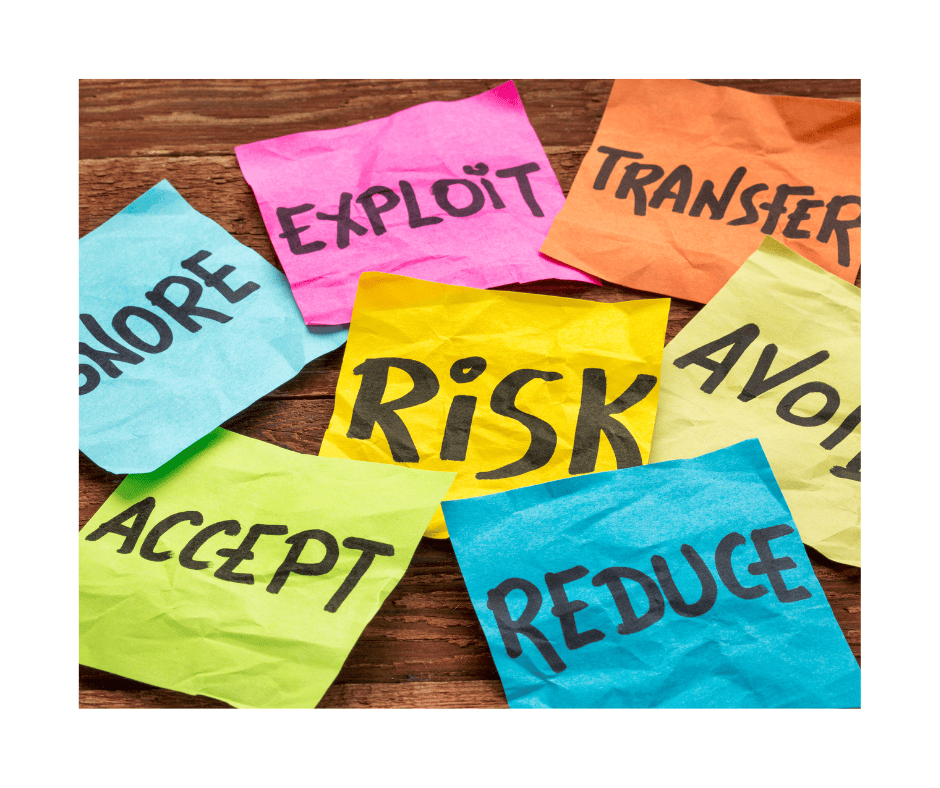
- Learning and Adaptation: Self-discipline extends to your commitment to learning and improving your trading skills.
- Disciplined traders invest time studying the markets, analyzing their past trades for mistakes, and seeking ways to enhance their strategies.
- They are open to adapting their approaches as market conditions change.
- Setting Realistic Goals: Disciplined traders set achievable, realistic goals. They don’t enter the market with the expectation of becoming overnight millionaires.
- Instead, they establish clear and attainable targets based on their trading strategies and risk tolerance.
- Journaling and Record-Keeping: Keeping a trading journal is an effective way to enforce self-discipline.
- It allows you to document your trades, including entry and exit points, reasons for each trade, and emotional states during trading.
- Reviewing your journal helps identify areas where discipline may have wavered and offers insights for improvement.
- Accountability: Often, maintaining self-discipline requires external accountability.
- External accountability can involve sharing your trading goals and progress with a mentor, trading coach, or a trusted trading community.
- Knowing that others are monitoring your actions can help reinforce discipline.
Self-discipline means adhering to your trading plan, managing your emotions, avoiding impulsive decisions, maintaining patience and consistency, and practicing effective risk management.
Developing and maintaining self-discipline is an ongoing process that requires dedication and self-awareness.
What Risk Management Skills Do I Need to be a Forex Trader?
Risk management encompasses a set of strategies and practices aimed at preserving capital, minimizing potential losses, and safeguarding your long-term viability in the market.
Effective risk management involves several key components:
- Position Sizing: Position sizing refers to determining the capital allocated to a single trade.
- A common rule in risk management is to risk only a small percentage of your total trading capital on any single trade, typically between 1% and 2%.
- This approach ensures that a string of losses does not deplete your trading account.
- For example, if you have a $10,000 trading account and are willing to risk 2% on a trade, your maximum allowable loss on that trade would be $200.
- Stop-Loss Levels: A stop-loss is a predetermined price level at which you exit a trade to limit potential losses.
- Calculating stop-loss levels is an essential risk management tool, allowing you to define your risk before entering a trade.
- Diversification: Diversifying your trading portfolio involves spreading capital across currency pairs or trading strategies.
- Diversification helps reduce the impact of a single losing trade on your overall account balance.
- Diversification can also provide opportunities for profit in various market conditions.
- Risk-Reward Ratio: The risk-reward ratio measures the potential reward relative to the risk in a trade.
- Maintaining a favorable risk-reward ratio ensures that potential gains outweigh potential losses.
- A standard guideline is to aim for a risk-reward ratio of at least 1:2, meaning that you should strive to make at least two dollars in profit for every dollar you are willing to risk (your stop-loss).

- Risk Tolerance: Understanding risk tolerance is crucial for effective risk management.
- It refers to your ability and willingness to endure losses without emotional distress.
- Risk tolerance can vary from trader to trader, and it’s essential to align your trading strategy with your risk tolerance level.
- Overextending beyond risk tolerance can lead to emotional decision-making and poor management.
- Correlation Analysis: Correlation analysis involves assessing the relationships between different trading positions in your portfolio.
- Amplifying risk can occur when highly correlated positions reflect losses in one asset onto others.
- Effective risk management involves awareness of these correlations and adjusting to reduce risk exposure if necessary.
- Regular Review and Adjustment: Risk management is not a one-time task; it requires continuous monitoring and adjustment.
- You should regularly assess your risk management strategies, especially after significant market events or changes in trading conditions, and make necessary modifications to adapt to evolving market dynamics.
- Avoiding Overleveraging: Leverage can amplify both gains and losses. Using leverage judiciously and avoiding overleveraging is crucial, which can lead to margin calls and substantial losses.
- A disciplined approach to leverage is a fundamental aspect of risk management.
Risk management is an integral part of trading that can distinguish between long-term success and failure.
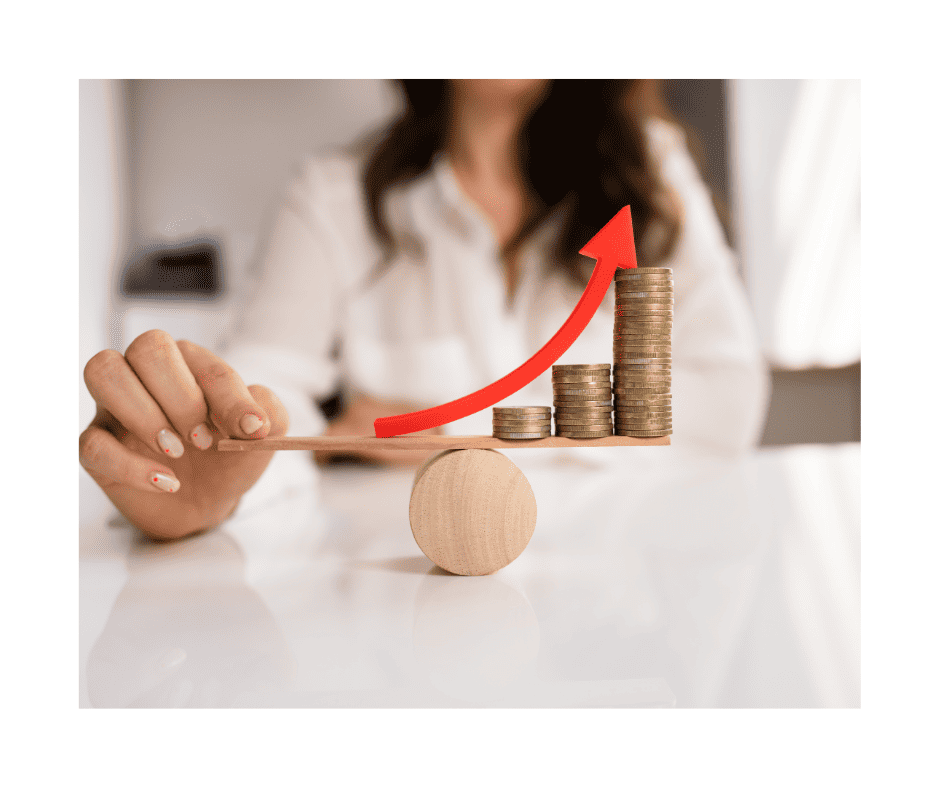
What Analytical Skills Do I Need to be a Forex Trader?
To be a Forex trader, analytical skills are fundamental to the decision-making process.
These skills enable you to assess market data, identify patterns, and make informed judgments about when to enter or exit trades.
In trading, analytical skills encompass two primary forms of analysis: technical and fundamental.
Technical Analysis
Technical analysis involves studying historical price charts and various technical indicators to predict future price movements.
Here’s an in-depth look at technical analysis and the analytical skills it requires:
- Chart Analysis: Technical analysts examine price charts, which display historical price movements, to identify patterns, trends, and support/resistance levels.
- Analyzing these charts helps traders make predictions about future price movements.
- Indicators and Oscillators: Technical analysts use a wide range of technical indicators and oscillators (e.g., Moving Averages, Relative Strength Index, MACD) to gauge the strength and direction of price trends.
- Understanding how these indicators work and interpreting their signals is essential for practical analysis.
- Pattern Recognition: Analytical skills include recognizing chart patterns such as head and shoulders, double tops/bottoms, flags, and triangles.
- Identifying these patterns can help traders anticipate potential trend reversals or continuations.
- Candlestick Analysis: Candlestick patterns provide insights into market sentiment.
- Strong analytical skills can interpret candlestick formations to assess potential market reversals or trend continuations.
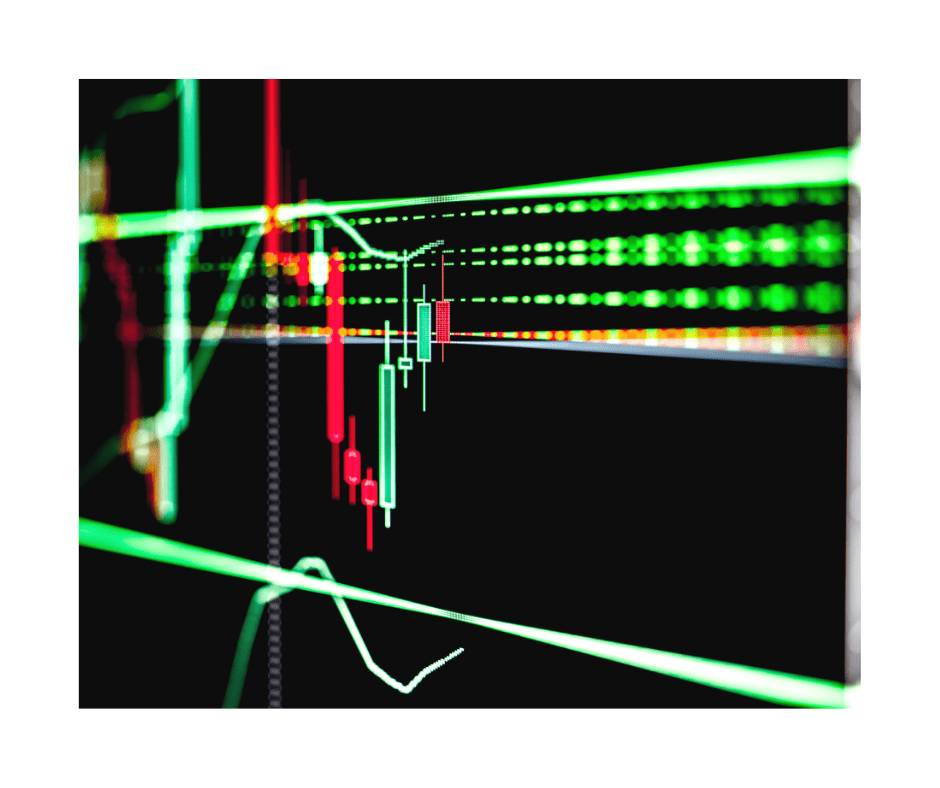
Fundamental Analysis
Fundamental analysis evaluates economic, political, and social factors influencing asset prices.
Here are the analytical skills required for practical fundamental analysis:
- Economic Data Interpretation: Fundamental analysts must interpret economic indicators like GDP growth, inflation rates, employment data, and central bank policies to assess the overall health of an economy and its potential impact on asset prices.
- News Analysis: Staying informed about current events, geopolitical developments, and market news is vital.
- Strong analytical skills can discern which news items are likely to affect the markets significantly and how to react accordingly.
- Interest Rates and Central Bank Policies: Analyzing interest rate decisions and statements from central banks like the Federal Reserve or the European Central Bank requires a deep understanding of monetary policy and its impact on currency values.
Analytical Tools
In addition to understanding the principles of technical and fundamental analysis, you need proficiency in using analytical tools and software.
These tools can include trading platforms with built-in charting capabilities, economic calendars for tracking essential events, and financial news services for staying updated.
Continuous Learning
Analytical skills in trading require ongoing education and practice. Markets evolve, and new analytical techniques and tools emerge.
To be a Forex trader, you must continuously learn and refine your analytical abilities to adapt to changing market conditions.
Whether using technical or fundamental analysis, having strong analytical skills can help you better interpret market data, identify opportunities, and manage risk effectively.
Furthermore, combining analytical skills with discipline and risk management is a winning formula for successful trading.
Can I Be a Forex Trader if I’m Emotional?
Emotional control is a paramount factor in your trading success. The financial markets are rife with uncertainty, volatility, and the potential for gains and losses.
As a result, it’s normal to experience a wide range of emotions, including fear, greed, excitement, and frustration.

Maintaining emotional control is essential to make rational decisions and avoid impulsive actions that can lead to significant losses.
Here’s a more in-depth exploration of the importance of emotional control in trading:
- Fear and Anxiety: Fear is a natural response when facing potential financial losses.
- Fear of losing money can lead to hesitation in executing trades, prematurely closing profitable positions, or avoiding the market altogether.
- Have solid emotional control, acknowledging your fears but not allowing them to dictate your decisions.
- Make rational assessments based on your trading plans and risk management strategies.
- Greed and Overconfidence: Greed and overconfidence can be equally detrimental to trading success.
- After a string of winning trades, you might become overconfident and take excessive risks, believing you can do no wrong. This misbehavior often leads to recklessness and significant losses.
- Emotional control involves remaining humble and adhering to a well-defined trading plan, regardless of past successes.
- Impulse Trading: One of the most common pitfalls of traders lacking emotional control is impulse trading.
- Emotional traders often make impulsive decisions based on gut feelings or short-term market fluctuations rather than a comprehensive situation analysis.
- This behavior can lead to erratic trading patterns and inconsistent results.
- Revenge Trading: Revenge trading is a dangerous emotional reaction to losses.
- After experiencing a significant loss, you may attempt to recoup your losses quickly by making larger, riskier trades.
- Anger and a desire to “get even” drives this behavior.
- Revenge trading rarely leads to positive outcomes and often results in further losses.

- Staying Calm Under Pressure: Staying calm and composed during stressful market situations is a hallmark of emotionally disciplined traders.
- Market conditions can change rapidly, and unexpected events can occur.
- Emotionally controlled traders avoid panicking or making rash decisions when faced with market turbulence.
- Discipline in Following the Trading Plan: Emotional control is critical in adhering to a trading plan.
- You may feel tempted to deviate from your established strategies when emotions run high.
- Discipline and emotional control are essential in sticking to the plan, regardless of whether individual trades are winners or losers.
- Mindfulness and Self-Awareness: Try to practice mindfulness and self-awareness.
- Pay close attention to your emotional states, recognize when emotions influence your decisions, and take steps to regain equilibrium before making trading choices.
- Coping Strategies: Successful traders develop coping strategies to manage their emotions.
- Techniques such as deep breathing, meditation, or taking breaks during stressful trading sessions can help maintain emotional control.
- Additionally, discussing trading experiences with a mentor or therapist can provide valuable insights and support.
- Long-Term Perspective: Emotionally controlled traders understand that trading is a long-term endeavor.
- They do not let short-term losses or gains affect their overall perspective.
- Emotions arising from daily trading activity are kept in check, focusing instead on achieving long-term financial goals.

Emotional control is a foundational aspect of successful trading.
To be a Forex trader, you must make rational decisions, adhere to your trading plans, and avoid impulsive actions driven by fear or greed.
What Continuous Learning Do I Need to be a Forex Trader?
Continuous learning is essential in Forex trading.
The financial markets are ever-evolving and influenced by economic, geopolitical, and technological factors.
To be a Forex trader, you must commit to ongoing education and skill development to stay competitive and adapt to changing market conditions.
Here’s an in-depth look at the significance of continuous learning in trading:
- Market Dynamics and Trends: Financial markets are not static; they exhibit various trends, cycles, and patterns.
- Continuous learning allows you to stay attuned to these dynamics.
- By studying historical market data and recognizing current trends, you can make informed decisions about when to enter or exit positions.
- Understanding market trends also aids in risk management and developing effective trading strategies.
- Economic and Fundamental Analysis: Economic events and fundamental factors significantly impact asset prices.
- Continuous learning in economics and financial analysis enables you to interpret economic indicators, central bank policies, and geopolitical events.
- Your decision-making must stay informed about critical economic releases (e.g., GDP, inflation, employment data) and their potential market effects.
- Technical Analysis: Technical analysis involves studying historical price charts and patterns to predict future price movements.
- Continuous learning in technical analysis includes mastering various chart patterns, understanding how different technical indicators work, and keeping abreast of emerging tools and techniques.
- Staying updated on technical analysis developments enhances your ability to identify entry and exit points accurately.
- Trading Strategies: Developing and refining trading strategies is an ongoing process.
- You must continuously assess the effectiveness of your approaches and adapt to changing market conditions.
- Exploring new trading strategies, testing them in simulated environments, and fine-tuning them based on historical data can improve trading performance.

- Risk Management Techniques: Risk management is paramount in trading.
- Continuous learning in risk management helps you refine your skills in position sizing, stop-loss placement, and overall portfolio risk assessment.
- Risk management techniques may need adjustments to remain effective as market conditions evolve.
- Technology and Trading Tools: Technology influences the trading landscape.
- Traders must stay updated on the latest trading platforms and software tools.
- Continuous learning in technology ensures you can leverage cutting-edge tools to enhance trading efficiency.
- Psychology and Emotional Control: Psychological aspects of trading, such as emotional control and discipline, are vital to success.
- Continuous learning in psychology helps you develop strategies to manage your emotions effectively.
- Hone techniques like mindfulness and self-awareness through ongoing practice.
- Learning from Mistakes: Continuous learning involves reflecting on past trading experiences and learning from mistakes.
- Analyzing both winning and losing trades can provide valuable insights.
- Continuously evaluating your performance makes you better equipped to refine your strategies and avoid repeating costly errors.
- Trading Community Involvement: Engaging with a trading community can provide opportunities for shared knowledge and insights through forums, social media, or mentorship programs.
- Interacting with experienced traders and learning from their experiences can accelerate learning.
Continuous learning is a non-negotiable requirement to be a Forex trader.
By prioritizing ongoing education and skill development, you are better equipped to navigate the complexities of the financial markets.
Do I Have the Financial Stability to be a Forex Trader?
Financial stability is a fundamental prerequisite for individuals considering trading.
You must ensure a solid financial foundation to embark on a trading journey.
Here’s a more detailed exploration of the significance of financial stability in trading:
- Trading Capital: Trading requires capital to open and maintain positions in the financial markets.
- This capital is at risk and can be lost, so you should use funds you can afford to lose without jeopardizing your overall financial well-being.
- Separating your trading capital from your daily living expenses and long-term savings is essential.

- Risk Management: Financial stability and risk management are closely tied.
- Successful traders carefully manage their risk exposure, often risking only a small percentage of their trading capital on each trade.
- If you don’t have financial stability, you may feel tempted to take risks beyond your means, resulting in substantial losses and financial difficulties.
- Managing Losses: In trading, losses are inevitable. Even the most experienced traders face losing streaks.
- Financial stability ensures you have the resilience to absorb losses without financial ruin.
- It allows you to continue trading and learning from your experiences, even during challenging periods.
- Emotional Control: Financial instability can lead to emotional distress, anxiety, and impulsive decision-making.
- When trading with funds you can’t afford to lose, the fear of losing can become overwhelming.
- Financial stability helps you maintain emotional control and stick to your trading plan, even in challenging market conditions.
- Adequate Trading Capital: Sufficient trading capital is vital for effective risk management and pursuing profitable opportunities.
- Undercapitalization can limit your ability to diversify your portfolio, trade multiple assets, and withstand drawdowns.
- Financial stability means you can allocate more substantial capital to your trading activities, increasing your potential for success.
- Managing Living Expenses: Financial stability ensures that your basic living expenses, such as rent or mortgage payments, utility bills, groceries, and healthcare, are covered independently of your trading results.
- Relying on trading income to cover essential living costs can lead to stress and pressure, affecting your decision-making and emotional stability.

- Opportunity Costs: Trading is time-consuming and may not generate immediate returns.
- Financial stability allows you to commit time and resources to trading without significant opportunity costs.
- It means you can focus on learning, developing strategies, and waiting for the right trading opportunities to arise without the pressure of generating quick profits.
- Long-Term Perspective: Financial stability supports a long-term perspective in trading.
- They can withstand the inevitable ups and downs of the markets, staying committed to their trading goals.
- Investment in Education and Tools: Financial stability enables you to invest in trading education and tools, such as trading courses, books, charting software, and data feeds.
- These investments can enhance your trading skills and give you a competitive market edge.
Before entering the trading world, assessing your financial situation honestly and ensuring a solid financial foundation is imperative.
This stability protects your overall financial well-being and provides the peace of mind and freedom to pursue trading as a long-term endeavor.
What Time Commitment is Required to be a Forex Trader?
Trading is not a part-time hobby or a get-rich-quick scheme; it’s a profession that demands a significant time commitment.
To be a Forex trader, you must allocate time and effort consistently.
Here’s an in-depth look at the importance of time commitment in trading:
- Market Monitoring: The financial markets operate 24 hours a day, five days a week, in various time zones worldwide.
- Depending on your preferred trading style and the assets you trade, you may need to monitor the markets during specific hours.
- For example, day traders focus on short-term price movements and may need to trade actively for several hours each day.
- Research and Analysis: Successful trading requires in-depth research and analysis.
- You must keep up with economic events, news releases, and market developments.
- Research involves reading financial news, studying economic indicators, and analyzing price charts and technical indicators.
- Allocate time for research and analysis to make informed trading decisions.
- Strategy Development: Developing and fine-tuning trading strategies is a time-consuming process.
- You must create and test strategies using demo accounts in different market conditions.
- The time spent on strategy development is crucial for finding approaches that align with your trading goals and risk tolerance.

- Learning and Education: The financial markets are constantly evolving.
- You must invest time in learning and education to stay informed about new trading techniques, technologies, and market trends.
- This commitment to ongoing learning helps you adapt to changing market conditions and refine your skills.
- Journaling and Record-Keeping: Maintaining a trading journal is a valuable practice for you.
- It involves documenting each trade, including entry and exit points, reasons for the trade, and emotional states during trading.
- Reviewing the journal helps identify your trading approach’s strengths and weaknesses but also requires time and effort.
- Continuous Improvement: You must commit to constant improvement to be successful.
- Review your trading performance, analyze past trades, and seek ways to enhance your strategies.
- This process of self-assessment and refinement is essential for long-term success.
- Balancing with Other Responsibilities: You may have responsibilities like full-time jobs or family commitments.
- Balancing trading with these responsibilities can be challenging.
- It’s essential to manage your time effectively, set clear priorities, and establish boundaries to ensure that trading does not interfere with other crucial aspects of your life.
- Emotional Well-Being: Time commitment also extends to emotional well-being.
- Trading can be emotionally taxing, especially during periods of losses.
- You must allocate time for relaxation, stress management, and activities promoting mental and emotional balance.
- Adaptation to Market Hours: Depending on the markets you trade and your geographic location, you may need to adjust your daily schedule to align with market hours.
- Depending on your trading preferences, this can mean trading during evenings, early mornings, or weekends.
You must allocate time for market monitoring, research, analysis, strategy development, trade execution, education, and continuous improvement.
Additionally, balancing trading with other responsibilities and managing emotional well-being are essential considerations.

Do I Need a Specific Trading Plan to be a Forex Trader?
A trading plan is a comprehensive blueprint that outlines a trader’s strategy, goals, risk management rules, and decision-making processes.
It is a vital tool for achieving success in the financial markets.
Here’s an in-depth look at the significance of a trading plan in trading:
- Clear Objectives: A well-constructed trading plan begins with clear and specific objectives.
- These objectives define what you aim to achieve through trading, whether generating income, building wealth, or funding specific financial goals.
- Objectives provide a sense of purpose and direction, helping traders stay focused and motivated.
- Strategy and Methodology: A trading plan specifies the strategy and methodology you intend to follow.
- It outlines the criteria for entering and exiting trades, which assets you’ll trade, and the timeframes you’ll use.
- Defining your strategy in advance ensures that you have a structured approach to the markets.
- Risk Management: Risk management is one of the most critical components of a trading plan.
- It outlines how much capital you are willing to risk on each trade, where you will place stop-losses to limit potential losses, and how you will size your positions.
- A robust risk management strategy is essential for protecting your capital and maintaining financial stability.
- Position Sizing: Your trading plan should include guidelines for position sizing.
- It defines the size of your trades relative to your account size and risk tolerance.
- Position sizing is crucial to risk management, ensuring you do not overexpose yourself to the market.
- Entry and Exit Rules: A trading plan specifies the criteria for entering and exiting trades.
- Your plan should include technical indicators, chart patterns, or fundamental factors that trigger trade entries and exits.
- Clear and objective entry and exit rules help eliminate emotional decision-making.
- Trade Management: Trade management rules are essential for a trading plan.
- They outline how you will manage open positions, including when to adjust stop-loss levels, take profit, or trail stops to lock in profits.
- Effective trade management ensures that you maximize gains and minimize losses.
- Trading Schedule: Your trading plan should specify when you will actively engage in the markets.
- Setting a schedule helps create a routine and ensures you allocate sufficient time for research, analysis, and trade execution.

- Risk-Reward Ratios: A trading plan often includes predefined risk-reward ratios.
- These ratios specify the potential reward you seek relative to the risk you will take on each trade.
- Having a target risk-reward ratio helps maintain consistency in your trading approach.
- Continuous Review and Adaptation: A trading plan is not static; it should be subject to regular review and adaptation.
- Markets change, and your trading plan should evolve accordingly.
- Traders who adhere to their plans while remaining open to adjustments are better equipped to adapt to changing market conditions.
- Psychological Preparation: While not always explicitly stated in a trading plan, psychological preparation is essential.
- A trading plan can help you manage emotions by providing clear guidelines and reducing uncertainty.
- It promotes discipline and emotional control, which are crucial for maintaining consistency in trading.
To be a Forex trader, having a trading plan is a foundational element of successful trading.
It provides structure, discipline, and a roadmap for traders navigating complex and volatile financial markets.
What Realistic Expectations Should a Forex Trader Have?
The markets lure many aspiring traders with dreams of quick riches, but trading can present a different reality.
Here’s an in-depth look at the significance of having realistic expectations in trading:
- Avoiding Unrealistic Goals: One of the primary benefits of having realistic expectations is that it prevents you from setting unattainable goals.
- The financial markets are not a guaranteed path to wealth, and it’s essential to understand that trading is inherently risky.
- Unrealistic expectations can lead to disappointment, frustration, and impulsive decisions.

- Embracing the Learning Curve: Trading is a skill that requires time and effort to develop.
- Realistic expectations acknowledge that success in trading takes time to come.
- It involves a learning curve where you gain experience, refine your strategies, and learn from wins and losses.
- Understanding this curve helps you persevere through challenging periods and stay committed to your trading journey.
- Managing Risk: Realistic expectations play a critical role in managing risk.
- If you expect significant profits from every trade, you may be inclined to take excessive risks.
- Realistic traders focus on preserving capital and managing risk effectively, knowing that not every trade will be a winner.
- Reducing Emotional Stress: Unrealistic expectations can create emotional stress and pressure.
- When trades don’t meet lofty expectations, you may experience anxiety, frustration, and self-doubt.
- Realistic expectations promote emotional stability and help traders maintain discipline and composure during winning and losing streaks.
- Aligning with Market Realities: Influencing financial markets are many factors, including economic data, geopolitical events, and market sentiment.
- The collective actions and decisions of countless participants determine prices.
- Realistic expectations recognize that market outcomes are uncertain and not entirely controllable.
- Long-Term Perspective: Realistic traders adopt a long-term perspective.
- They understand that trading is not about making quick profits but building a sustainable career.
- Rather than aiming for overnight success, they set achievable, incremental goals that accumulate over time.
- Consistency Over Time: Realistic expectations emphasize consistency over time.
- Trading success often comes from a series of well-executed trades rather than a single windfall.
- Recognizing that consistent profitability takes time helps traders stay committed to their strategies and trading plans.

- Risk-Reward Assessment: Realistic traders assess risk-reward ratios carefully.
- They don’t enter trades with unrealistic expectations of oversized profits without commensurate risk.
- Instead, they evaluate each trade based on its potential risk and reward, aligning with their overall trading strategy and financial goals.
- Continuous Learning: Realistic expectations also extend to recognizing that learning and improvement are ongoing processes.
- Successful traders commit to continuous education and adapt to changing market conditions.
- They understand that the markets evolve, and their strategies must evolve.
Having realistic expectations is essential for success and longevity in trading.
Realism helps you avoid unnecessary risks, manage emotions, and navigate the complexities of the financial markets.
Conclusion
Is Forex trading for you? It’s a question that requires honest self-assessment.
Trading can be a rewarding endeavor, but it’s only for some. Successful traders possess a combination of self-discipline, risk management skills, analytical thinking, emotional control, and a commitment to continuous learning.
Additionally, having financial stability, a well-defined trading plan, and realistic expectations are essential.
If you believe you have these qualities and are willing to put in the time and effort required to become a trader, then it’s worth exploring further.
However, exploring other investment opportunities is perfectly okay if trading does not align with your personality or financial situation.
Remember that trading is just one path to financial success, and many other options are available.
What’s the Next Step?
Consider your trading experience and whether you have what it takes to be a Forex trader.
In addition, look for opportunities to use what you’ve learned and incorporate it into your trading habits.
If you need help developing an analysis process, you can use our Six Basics of Chart Analysis. If you’re unfamiliar with the Six Basics, you can learn them here for free.
The “Six Basics” will give you a strong foundation in chart analysis, which you can incorporate with what you’ve learned about how to be a Forex trader.
In addition, when you get the “Six Basics,” you’ll also get Forex Forecast delivered to your inbox every Sunday.
Forex Forecast includes:
- Trade Ideas and Analysis
- I will show you the trade opportunities I’m watching using the Six Basics of Chart Analysis and Advanced Strategies.
- Case Studies from Around the Web
- Watch how applying the Six Basics worked on some of the best, most profitable trades.
- Trading Education Guides and Videos
- Want to learn most Six Basics techniques and advanced strategies?
- I produce Videos and Guides to help you learn and build a better trading practice.
- Links to New Articles
- I publish new articles on topics traders will want to know about every week, and you can find out when they post.
- Positionforex.com News
- Did something change at positionforex.com? Learn about it here first!
- Links to upcoming webinars
- Attend free webinars to improve your trading.
- And Much More
- Tools, Membership-only Videos, and more will be released in the Forex Forecast.
The best part – it’s completely free.

Frequently Asked Questions
What is the Minimum Amount of Capital Needed to Start Trading?
The minimum amount of capital needed to start trading can vary depending on the type of trading and the broker you choose.
For many traders, starting with at least $2,000 is recommended.
However, some brokers offer accounts with lower minimum deposits.
Remember that the amount you start with should be money you can afford to lose without impacting your financial stability.
What are the Different Trading Styles, and how do I Choose the Right one for me?
Various trading styles include day trading, swing trading, and position trading.
The choice depends on your risk tolerance, time commitment, and trading goals.
Day trading involves short-term, intraday trades, while swing trading holds positions for days to two weeks.
Position trading focuses on holding trades for weeks to months.
Evaluate your preferences, available time, and risk tolerance to determine which style suits you best.
How do I Create a Trading Plan, and Why is it Essential?
Creating a trading plan involves outlining your strategy, risk management rules, and goals.
Start by defining your objectives and risk tolerance. Specify the assets you’ll trade and your entry and exit criteria. Include risk management rules, position sizing guidelines, and a trading schedule.
A trading plan is crucial because it provides structure, discipline, and a roadmap for your trading activities. It helps you make informed decisions and maintain consistency.
How do I Manage Risk in Trading?
Risk management is a fundamental aspect of trading. To manage risk effectively, use stop-loss orders to limit potential losses on each trade.
Diversify your portfolio to spread risk across different assets or markets.
Set a maximum percentage of your trading capital to risk on any single trade, typically between 1% to 2%.
Regularly review and adjust your risk management strategies to adapt to changing market conditions.
What Resources Are Available for Learning About Trading?
There are numerous resources available for learning about trading. Consider reading books, taking online courses, and participating in webinars or seminars on trading topics.
Educational websites and forums can provide valuable insights. Additionally, practice trading in a demo account to apply your knowledge without risking real capital.
Seeking guidance from experienced traders or mentors can also accelerate your learning process and help you avoid common pitfalls.

